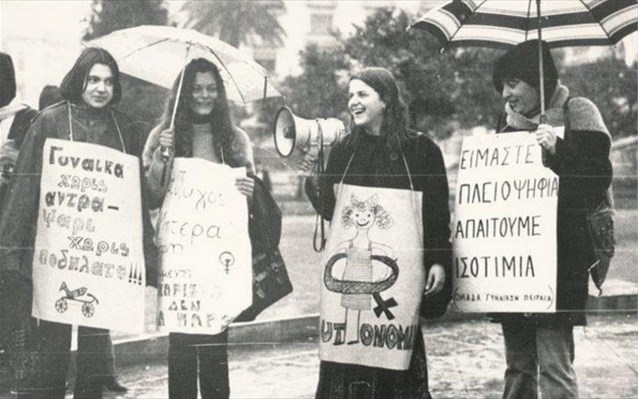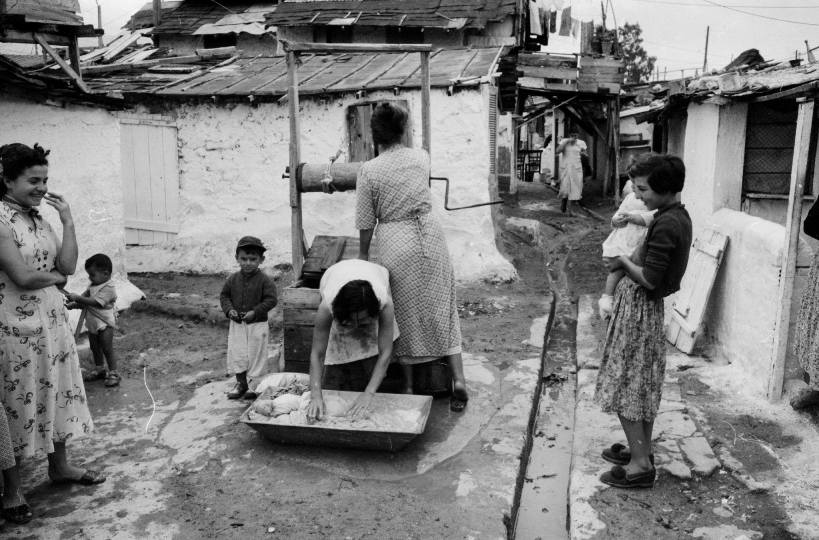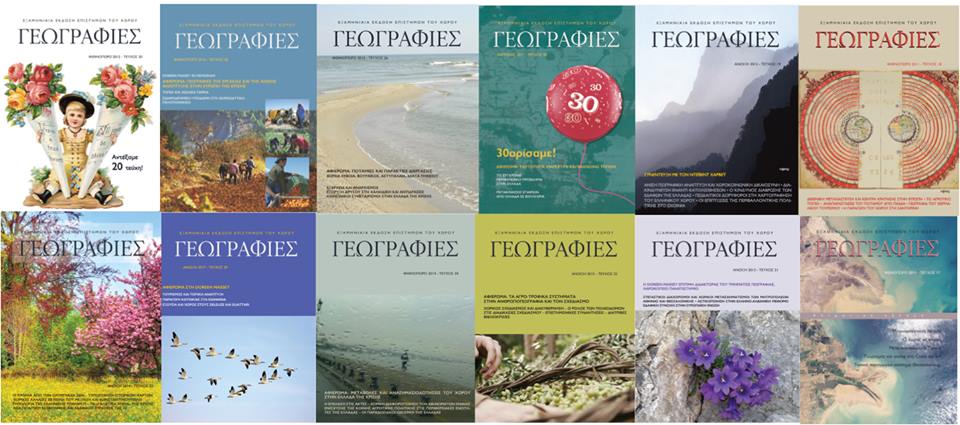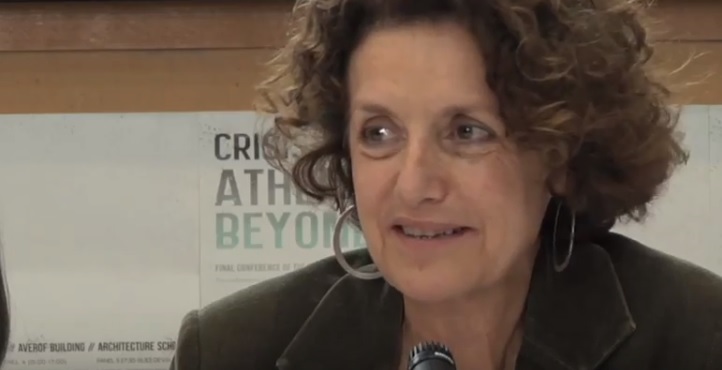Dina Vaiou is Professor of Urban Analysis and Gender Studies in the Department of Urban and Regional Planning of the National Technical University of Athens (NTUA) and coordinator of the post-graduate program on Urban and Regional Planning.
Her research interests include the feminist critique of urban analysis, the changing features of local labour markets, with special emphasis on women’s work and informalisation processes, the impact of mass migration on Southern European cities and women’s migration in particular, the gendered imprint of the crisis on the city. Among her recent publications are: Practices of solidarity in Athens: reconfigurations of public space and urban citizenship (with Ares Kalandides, 2018), Tracing aspects of the Greek crisis in Athens: Putting women in the picture (2014) and From `Settlement’ to `Integration’: Informal Practices and Social Services for Women Migrants in Athens (with Maria Stratigaki, 2008).
Professor Vaiou spoke* to Rethinking Greece about the Greek feminist movements, austerity policies, the unpaid work of women in the cities, the role of migrant women and Greece’s care crisis as well as Athens exciting character, the importance of socail geography in the understanding of social/political/economic reality and Greece’s [and Southern Europe’s] “deviation” from socio-spatial development of the European North:
You are a member of the scientific committee for the The Hellenic Parliament Foundation’s exhibition “Feminism in the years of the transition to democracy (Metapolitefsi), 1974-1990: Ideas, collectivities , demands” now shown in Thessaloniki. Could you talk to us briefly about the shaping of feminist claims in post-dictatoship Greece? What is the main message the exhibition wants to convey?
I would like first to underline that it is very important that the Greek Parliament, through its Foundation for Parliamentarism and Democracy, has organised this exhibition, thereby acknowledging that the feminist movement was part of democratic transition and consolidation. In the second half of the 1970s, that is after the downfall of the dictatorship, in times of high politicisation, the women’s/feminist movement (re)assembled with renewed agendas and ways of organising. The exhibition aims to highlight the unprecedented mobilisation of women and the multiplicity of ideas, collectivities and demands which have shaped this movement in its vexed encounters with the political Left, and have marked its presence in Greek society, particularly -but not exclusively- in big cities.
The slogan of the time “The personal is political” highlights the significance of understanding the political character of male dominance and gender hierarchies in the private and public sphere; matters considered “private” or “personal” have therefore to become issues of public/political debate. In this line of thought, at the core of reflections of feminist groups lies the issue of self-determination and control of our own bodies. This has given rise to a number of key demands, campaigns and struggles, concerning women’s right to decide whether and when to have children, freedom of sexual orientation, free expression of sexuality, defense of women’s bodies against all efforts to violate such freedoms, rights to contraception (as a precondition for bodily control), free abortion, condemnation of rape, sexual harassment and all forms of gender-based violence, both in the family and in public.
An issue of convergence for women’s organisations, feminist groups and individual women was the reform of Family Law, at a time when the State was also interested to harmonise Greek legislation with the “acquis communautaire” in the (then) EEC. Mobilisation, in the streets and through institutions brought changes in a variety of areas of everyday life to do with divorce and children’s custody, property and inheritance management and control, freedom to choose domestic and paid work and much more.
 Towards the end of this period, the extreme deficit of representation of women in decision-making centres, and especially in the Parliament, raised concern among many feminists who promoted the issue of quotas in a variety of institutions and in political party organisations. Quotas, however, have been a controversial issue among feminist groups who argued that the elimination of gender-based discrimination is not necessarily connected to the physical presence of women in institutional or party politics. The demand failed to be addressed in the 1980s and was only settled in the early 2000s. Along a similar logic, women’s committees were formed in political parties and in trade unions which gave rise to serious tensions when women trade-unionists started focusing on women’s rights and on sexual harassment at the workplace. At the same time many reforms towards equality in the labour market went through Greek legislation as a matter of harmonisation with European law.
Towards the end of this period, the extreme deficit of representation of women in decision-making centres, and especially in the Parliament, raised concern among many feminists who promoted the issue of quotas in a variety of institutions and in political party organisations. Quotas, however, have been a controversial issue among feminist groups who argued that the elimination of gender-based discrimination is not necessarily connected to the physical presence of women in institutional or party politics. The demand failed to be addressed in the 1980s and was only settled in the early 2000s. Along a similar logic, women’s committees were formed in political parties and in trade unions which gave rise to serious tensions when women trade-unionists started focusing on women’s rights and on sexual harassment at the workplace. At the same time many reforms towards equality in the labour market went through Greek legislation as a matter of harmonisation with European law.
As it is to be expected, the women’s/feminist movement gave rise to harsh reactions but also to much publicity and attention. It has contributed to sensitise Greek society on gender-based inequalities and violence in many spheres of everyday life, rights to one’s body and sexuality, towards the development of more open and tolerant attitudes – a difficult initiative at that time.
Which do you think have been the biggest institutional victories of the feminist movements in Greece the past 40 years? There is a widespread belief, even among women in the Left, that today there is no more need for feminist discourse or activism. Would you agree?
A major step forward towards institutional reform has been the Constitution of 1975, which directly conveyed the message of equality among women and men. The reform of a very parochial and reactionary Family Law (1983) is another important such step. Beyond these reforms, it is worth mentioning the criminalisation of rape (except within the marriage contract!), the institution of civil marriage (although here the influence of the Greek church made it only optional), women’s right to keep their family name after marriage. Also an institutional mechanism for equality between women and men was introduced, first as an Advisory Board by the Prime Minister and then as a General Secretariat for Equality (1985). Integration in the (then) EEC brought about a series of “equality policies” implemented through Community Support Frameworks (eg. women’s training in male-dominated professions or measures to reconcile family and employment duties). Later, in the early 2000’s, women’s/gender/feminist studies were instituted in several universities, again following a provision in the third Community Support Framework which financed “gender and equality studies” as a policy to promote equality in higher education.
However, the legacy of the feminist/women’s movement of the 1970s and 1980s has to be sought in the consciousness raising of women/ourselves, the cultures of mobilisation and collective struggle, the creation of a “common space” of recognition and struggle, of intimacy, engagement and support, despite internal differences; a common space enhanced by the multiplicity of small and bigger-scale campaigns and events, archives and publications (of magazines, books, innumerable pamphlets), women’s bookstores and cafés, feminist celebrations and parties. All of these and more not only have marked women’s/our lives, but have also contributed to shape more open and egalitarian attitudes on questions of gender, self-determination, sexuality, etc.
Three decades later, new generations of women, with very few exceptions, have lost contact with that legacy – generations born and grown in the social environment which was shaped by these institutional reforms and State interventions. Particularly PASOK governments from the 1980s onwards portrayed themselves as representing (and implementing) the demands and aspirations of the women’s/feminist and other movements, thereby neutralising or de-legitimising any form of protest or demand. The post-1989 collapse of the Left (even its fractions that were critical to former socialist regimes) further contributed to a distancing from all sorts of activism.
At present, in the context of a multifaceted crisis that touches upon every aspect of everyday life, feminist analyses and activism are more necessary than ever: rights and “victories”, as you called them, of the past are fast dismantling amidst austerity policies and the rise of reactionary (if not openly fascist) attitudes, while everyday discourse and often action are imbued with sexism. It is no secret that women are harder hit by austerity policies which lead to generalised intolerance of the “other”. And many feminist groups are active – albeit in new ways and with different agendas, in line with developments in feminist theory and activism by LGBTQ+ movements. They may not be as vociferous in the streets or following similar practices as in the past, but they are there – and testify to the fact that things do not develop along a smooth line but rather in fits and starts.

You have argued that the construction of Athens was largely based on the unpaid work of women. Could you talk to us more about this?
Your question could be a way of summarising a rather more complex argument to do with processes of urban development, not exclusively of Athens but most cities. What the argument aims to bring to the foreground of debate is the idea that “the city is peopled”. This is not to underestimate that urban development is a huge arena of capital investment (eg. in terms of actual construction, real estate or property development), as well as a space of institutional intervention (eg. in the form of urban planning or other legislation). But none of these processes or interventions could materialise in any meaningful or profitable way if urban space were not inhabited.
We get a partial, or even false, understanding if we do not take into consideration how this “inhabiting” has been made possible: the ways in which the multiplicity of social groups and individuals, the variety of cultures, the dynamics of living together/apart, the conviviality but also the conflicts along the lines of gender, class, ethnicity/race, age, etc. and, more importantly, combinations of these, come to form part of what we understand as cities and of the functioning of a bearable urban reality. And a huge volume of women’s unpaid work has gone into making cities “habitable”. Examples here include entire areas of (semi)squatting in the urban periphery of Athens, where technical and social infrastructures took decades to be implemented, or, more recently, urban neighbourhoods where such infrastructures have been left to deteriorate or completely collapse. Women’s unpaid care work has kept things going, thereby opening space for people to live, for new rounds of investment and institutional intervention, for recurrent rounds of grass roots claiming rights to the city.
After the crisis and the ensuing austerity measures, social services in Greece were significantly downgraded. How does that affect native and immigrant’s women care workload? Has the dismantling of the welfare state in Greece and all over Europe brought about a “care crisis”- in the words of Nancy Fraser?
As Nancy Fraser has forcefully argued, the dismantling of the welfare state has indeed brought about a “care crisis”. However, the intensity and the particular features of this care crisis differ across space and among social groups, as do the care arrangements that were in place and their place-specific restructurings. Let me give an example of this perhaps obscure statement. For Greek women who entered the labour market in the 1970s and 1980s, in order to pursue a paid job, let alone a demanding career, their mothers or other women relatives had to be mobilised, to look after the home, children or the sick and the elderly, since public services in these areas were either not available or not adequate (eg. public schools finished by 13:00 o’clock, while working time-schedules were much longer); this was an arrangement among women, putting little or no pressure on men. In higher income households paid services could be bought in a rather limited market.
After-1989 and the arrival of many migrant women from the Balkans and the former USSR, low-paid care work by migrant women became widespread and widely diffused, even among lower income households. This new round of care arrangements, again among women, this time local and migrant, created care deficits in migrant households, both in the place of destination and in the place of origin. After the crisis, the collapse of salaries and pensions and the significant disinvestment in care services have contributed to return much of the care work to the hands of local women, leaving many migrant women without jobs but also without the possibility to renew their residence permits. Moreover, downgrading of social services and infrastructures has made the care workload heavier, particularly in poorer areas of the city, thereby intensifying socio-spatial inequalities.
As an architect and an urban planner, what do you make of the claim that construction in the 50s and 60s destroyed the face of Athens? Is Athens an ugly, “concrete-block” city?
First let me say that, although I have a degree in architecture, I have stopped practicing it some thirty years ago. Moreover, my studies in planning, brought me nearer to the fields of Human Geography and Urban Studies. So, I would say that I speak as un urbanist – and as a lover of this (and any) city.
That Athens is an ugly, “concrete-block” city is a recurrent narrative since the interwar period; you can find many passages in literary texts of the time lamenting the “destruction of Athens”. As my previous comments to your questions perhaps imply, references to the amount of concrete that went into urban development and turned Athens into a metropolis of 3.5 million people, stick to an idea of the city is not much more than a technical artefact. They fail to acknowledge the labours of its women and men inhabitants and the ways in which micro-property ownership and its development contributed to social cohesion in a society deeply divided after a fierce civil war.
I would very much hesitate to call “ugly” a city whose history is still readable on its street pattern and land uses, many of which are in the same locations since the antiquity; a city invested with so rich and abundant human labour, and women’s labour in particular, in every aspect of the urban experience; a metropolis whose inhabitants come from more than 200 different countries and manage, against all odds, to live together even when austerity policies hit so hard and for so long. I would rather call it exciting…
 You are a member of the editorial board of Γεωγραφίες / Georgraphies. A scientific journal for spatial sciences. What can the perspective of human geography add to historical and political science accounts of Greece’s modernity? And in conclusion, does Greece follow its own, “exceptional path” in the modern world?
You are a member of the editorial board of Γεωγραφίες / Georgraphies. A scientific journal for spatial sciences. What can the perspective of human geography add to historical and political science accounts of Greece’s modernity? And in conclusion, does Greece follow its own, “exceptional path” in the modern world?
To cut short what could have been a very long response, I would argue, along with many others, that there can be no understanding of social/political/economic reality without geography. Things happen in space, not “on the head of a pin”, and this space matters for how things take shape and develop. This is true at a variety of interconnected geographical scales, from the vastly global to the miniscule local and down to the body, the geography closest in.
The dominance of historical and economic accounts often obscures the importance of geography and the ways in which space and place are produced, represented and imagined. From such a perspective, Greece, much like the rest of Southern Europe, is portrayed as a “deviation” from an implied “norm” which is shaped by the socio-spatial development of the European North. Features of this “deviation” include a productive structure where small and medium enterprises predominate, bureaucracies and clientelism which are deeply-rooted, a limited welfare state that is a ‘last resort’ provider (mainly through monetary transfers) and has had to be complemented by a multi-functional family (an economic unit, a security cushion and a provider of services), as well as widespread informal arrangements in many areas of social and economic life. These features have led to activities which sometimes border the illicit and/or criminal, to tax evasion and significant losses for the public sector, and behaviours that defy any sense of social responsibility. Particularly in the years of crisis and austerity, the negative connotations have legitimised the scale and intensity of such behaviours, mainly in the area of employment, but also in construction/real estate transactions.
These same features, however, have also permitted the survival of many households and firms, which would have otherwise been excluded, and pertained to a wealth of different conditions ranging from marginal survival strategies to dynamic and creative economic activities. This different, and spatially unequal, development path is most probably one of the reasons why austerity policies and memoranda provisions since 2010 have proven so utterly destructive not only in economic terms but, perhaps more importantly, socially and culturally, to the extent that they have not only ignored but also denigrated our difference and the “otherness” of Greece among EU member-states.
* Interview by Ioulia Livaditi & Nikolas Nenedakis
Read more via Greek News Agenda: Thomas Maloutas on the “Athens Social Atlas” project; Nikos Souliotis on Athens’ modern cultural identity; Feminism and Transition to Democracy (1974-1990)














